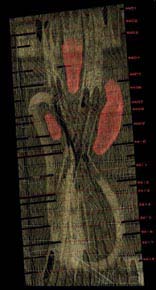|
|
||||
| in italiano | ||||
| Time
Sections, Abstract Machines |
||||
| CONDITIONS a
time-spatial discontinuity in the urban grid, ancient walls casually discovered in a
substrate of the contemporary town need a surplus of information to be understood and
interfaced with their current condition. |
[15jan2000] | |||
| ARKHAM Project Resource operates on the edge between
practice and research fields. Strategic forms of collaboration amongst the internal team
and external resources, such as graphic designers, IT consultants and structural
engineers, are organised into an open and evolving workflow, handling complexity in order
to reveal an opportunity in every constraint. Founded in 1998 as a workshop inside of the
Ambrosini Miyajima Architectural Studio, ARKHAM acts in many fields, from theoretical
statements to artworks, to interior design. Among the recent works: concept image for
Radio Montecarlo and Studio 105, Milan (project); G-house on the lake of Como; Y2K,
multibrand store in Jesolo Lido, Venice; Box1, apartment in Como; Iconica,
images-sounds-actions in memory of Ico Parisi, Casa del Fascio, Como (project). |
 Frames from the animation showing the project in the context DIAGRAMS diverse chronological stages of the urban evolution are mapped on the area, in order to read the historical stratifications as a multiplicity of signs; this abstract approach leads to consider the roman space as guided by metrics, a system of measure superimposed on the landscape, vs. medioeval spatial continuity, where more fluid relations between the same urban elements create a completely different pattern. |
|||
 Cross sections and diagrams assemblage ASSEMBLAGE (TIME SECTIONS) a surface, automatically displaced from the medioeval diagram, moves along the z axis, the historical stratification direction, intersecting in various, unpredictable, manners a series of paths; these paths start as parallels, allowing an undifferentiated access to the area, and mutate along their developing direction, intertwining and blending each other; linear openings are cut on the surface, virtually connecting the two levels by light, following the roman grid in rhythm and measure. Projected on the lateral wall, the cadence of the vertical and horizontal elements becomes a temporal diagram of the design process. MOVEMENT time takes part into the process through two kinds of movement: the first one, freezed when it reaches the best results in terms of complexity, is given by the surface intersecting the tubular paths; the second one is represented by multiple routes walking on which the project can be experienced (in absence of any objective, fixed, point of view, movement becomes the only way to understand relations). Thresholds between typical architectural categories (such as inside-outside, object-landscape etc.) are blurred in favour of a more supple condition, another kind of continuity (re)appears, as a new media, between the different historical layers of the city. |
 Topological wireframe visualization  Animation: Study of the relationships amongst intertwining paths |
|||
ARKHAM arkham@tin.it Time sections, abstract machines Operative proposal for the romans ruin area, viale Lecco, Como, November 1999. Project team: Luca Ambrosini, Marco Longatti, Hajime Miyajima Client: Comune di Como, Assessorato agli Eventi Culturali. Project shown at Generative Art '99, 2nd International Conference, Politecnico di Milano, 1st- 3rd of December 1999. |
||||
| per partecipare alla rubrica Architetture laboratorio |
||||